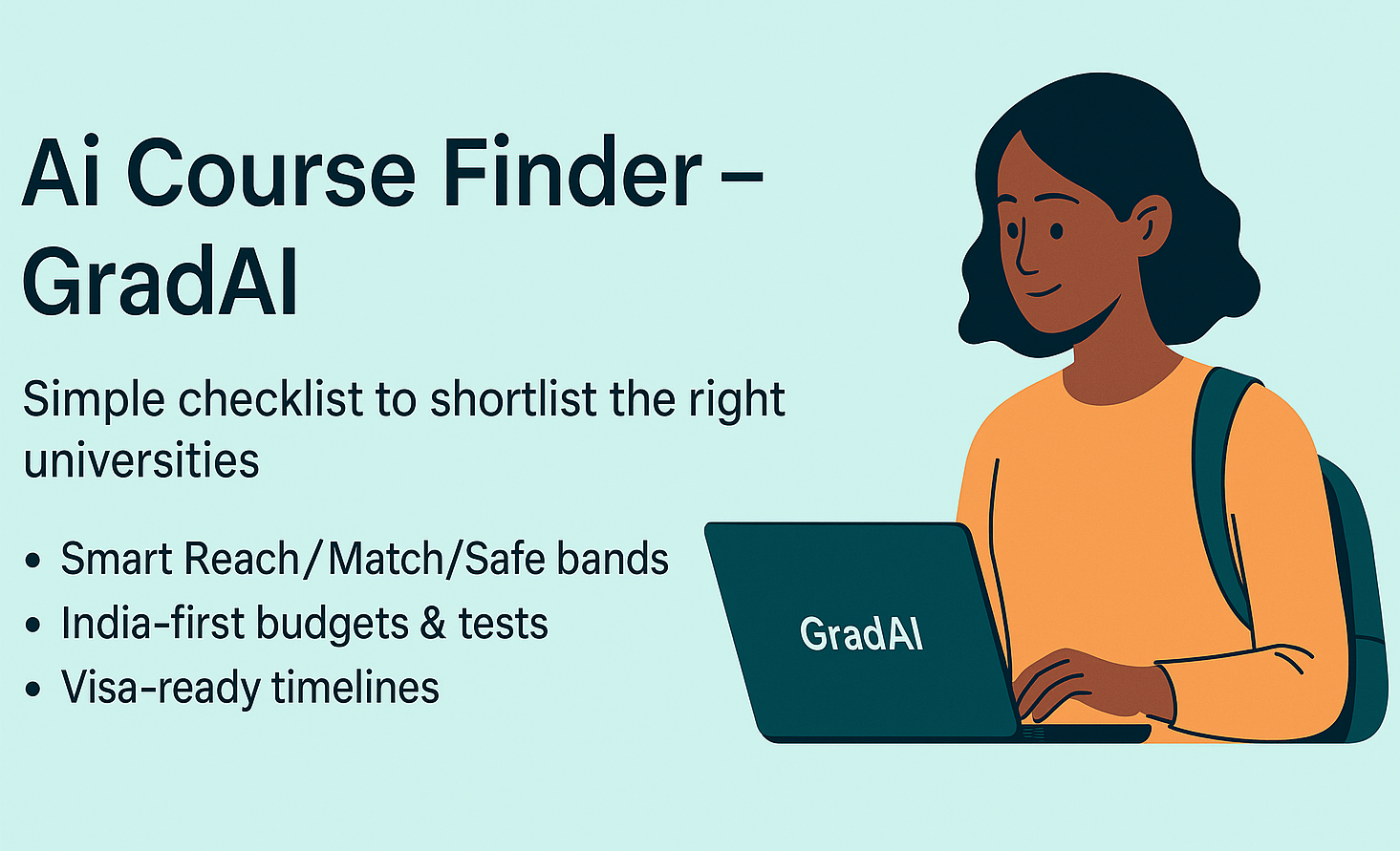Loading
Loading

An ai course finder helps you build a smart, realistic university shortlist by matching your profile—grades, test scores, goals, budget—to real program requirements and outcomes. Instead of random lists, it ranks options as Reach/Match/Safe using eligibility, course fit, internship density, post-study work rules, and estimated costs in INR for Indian students (adaptable globally). With GradAI, you can enter current or target scores, refine by modules/city/scholarships, and turn the shortlist into a clear application timeline.
An ai course finder cuts guesswork by matching your profile to real program requirements and outcomes. Instead of random “top 10” lists, you get a ranked shortlist based on fit: admit likelihood, course relevance, career signals, and affordability. For Indian applicants (and students across Africa), this means fewer wasted fees and a clearer path from test prep to visa.
Good systems (like GradAI) create Reach / Match / Safe bands by weighing:
Fine-tune the shortlist quickly:
Before you commit, open each department page to confirm:
For your top 8–12 programs, compare tuition + living (in INR) and map to likely bank/NBFC/international lender options. Treat any rate or eligibility you see online as indicative only—offers vary by provider/policy. If financing is critical, run a quick pre-assessment to understand required documents and timelines.
Grad ai course finder flows convert picks into actions:
Note: Costs, scholarships, and visa pathways change. Always verify on official university pages before applying. “Varies by provider/policy” applies to fees, scholarships, and loan terms.